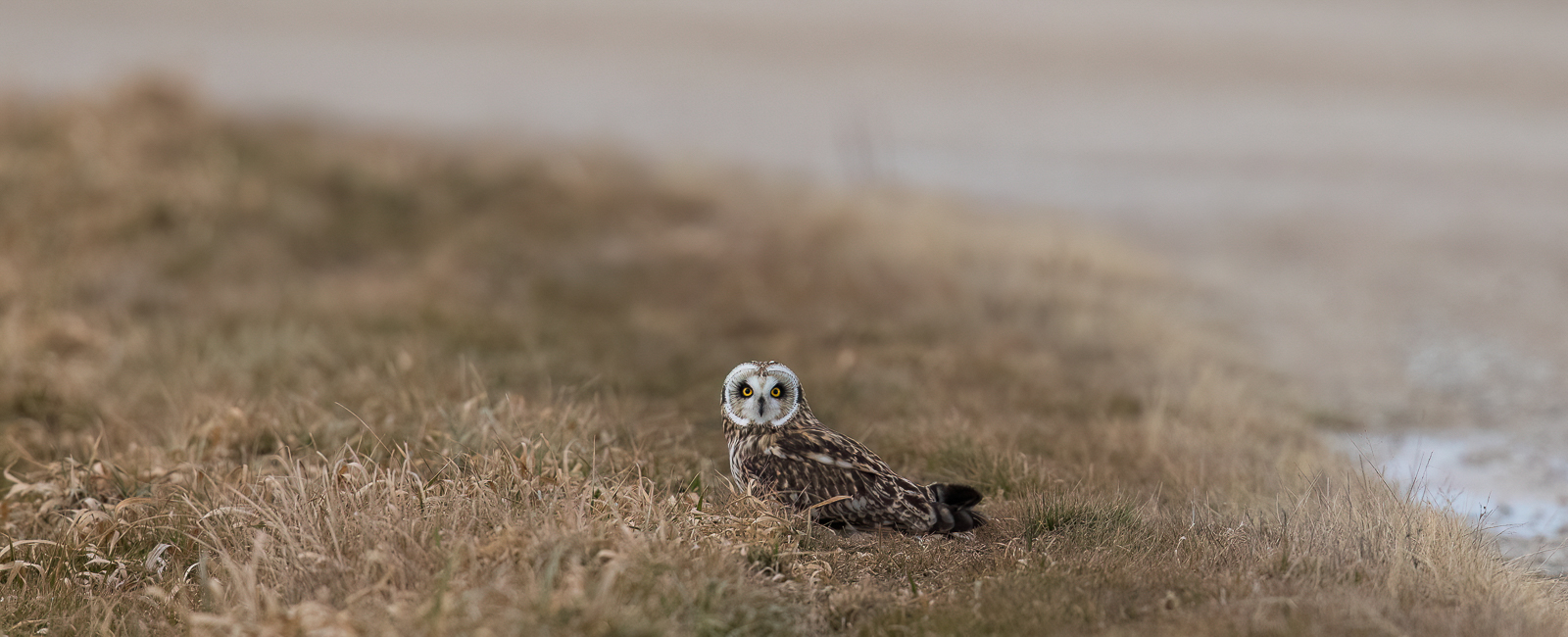With all the rare birds seen on Tuesday, I was hoping for a few more on Wednesday. Tuesday night was WSW and SW winds, so I knew it would be very good in the morning. Wow was it ever! I started at Warnimont Park just after sunrise and spent just over 5.5 hours there. When I opened the truck door, the air was filled with warbler songs. I knew right away how it would be. I had huge numbers of warblers including, 14 Golden-winged, 8 Blue-winged, 14 Orange-crowned, 33 Nashville, 14 Northern Parula, and 19 Black-throated Green! I also found 3 rare ones, Yellow-throated, Prairie and Cerulean Warblers. Most things were up rather high and photo opportunities were not that great. For the morning, I ended up with 103 species and 25 warbler species! Those kinds of numbers are a week early, but it’s what you get with the right weather. Around 10:30ish it started to get rather windy, and I would say by 11:00 it was pretty quiet. The walk back to the truck produced almost no birds, so I decided to grab lunch and call it a day. I got home, and I see a report of a Worm-eating Warbler (WEWA) at Lake Park. So, I figured I would go down there and try for it. It just so happens that it was also found in the north lighthouse ravine. Add another rare bird to that ravine for the year! I got down there just after 2:30pm. I ran into a friend, and he hadn’t seen it or knew of anyone that had. I kind of thought that may be the case too. These birds are tough to find, and the ground vegetation in the ravines is already green and 6″ tall. I walked in from the west side, so that the light was at my back. I walked extremely slow through the ravine, watching for any movement on the ground. I found 13 Ovenbirds in the first half of the ravine! Every time I saw one, I got excited, thinking it was the WEWA. About halfway down the ravine, I was watching an Ovenbird eat a moth, when something moved and caught the corner of my eye. I turned slightly and there it was, only 25′ in front of me working a fallen tree. I quick shot off a few doc photos. At that moment, a couple of girls were walking up from the bottom. I tried waving to them to stop, but they weren’t paying attention and by the time they did, they had gotten a little too close. The bird was sandwiched in by us and it flew around them and up the ravine. When they were passing, they asked what was going on, so I explained it to them. I didn’t think I would get to see it again, but someone was walking along the top of the ravine, approximately where it flew to, and they flushed it back down. I walked further down, about 35′ and waited for about 10 minutes. I didn’t see anything resembling a WEWA. I moved about 15′ further down from there and saw a few birds move. Two were Ruby-crowned Kinglets, and the other was the WEWA! It popped up into a small shrub only 10′ or so away from. It started singing very faintly and was even singing some type of song I’ve never heard from them. Normally they have a dry insect-like trill, but he was singing a bunch of different warbles before and after shorter than usual trill. If I had not seen him doing it, I would have never guessed that it was a WEWA. The bird kept working, slowly down the ravine, away from me. A friend came walking up from behind and asked if I had anything and I said I had the WEWA! He stood next to me, and I got him on it. We watched it for about 5 minutes, and it popped out into the open with a potato bug in its bill. It sat there for a good 20 seconds. Maybe it could hear our shutters and froze, which happens to me a lot, even though I had mine on silent (still makes some noise). It then flew across the ravine bottom to the south side and gave me an excellent view on a bare branch! After that we lost it. My friend moved on, and I stayed down there. I didn’t think I would see it anymore. A few other people walked through and didn’t see it as well. I made my way back down the ravine and I was standing by the water for a few minutes. I had noticed that several of the other warblers that were in the area the entire time, were now taking a bath. All of a sudden, in flies the WEWA, right into the water. Woah!!! He’s literally only 15′ away from me taking a bath! Unbelievable!!! I spent a little over 2 hours in that ravine and saw the bird 3 times. I was certainly rewarded for being patient and quiet. I took a walk around the top side of the ravine looking for the White-eyed Vireo again but didn’t see it, so I called it a day. Another awesome day with icing on the cake! Photos below are from the afternoon of 5/1. Enjoy!








































































































































































































































































































































